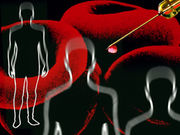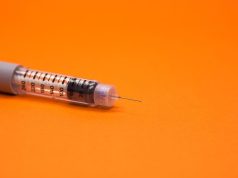Heparin should be terminated on suspicion of HIT; alternative anticoagulants recommended
WEDNESDAY, June 1, 2016 (HealthDay News) — Diagnosis and management of heparin-induced thrombocytopenia (HIT) are discussed in a review published in the May 31 issue of the Journal of the American College of Cardiology.
Benjamin S. Salter, D.O., from the Mount Sinai Medical Center in New York City, and colleagues present the risk factors, clinical presentation, pathophysiology, diagnostic principles, and treatment of heparin-induced thrombocytopenia.
The researchers note that the prevalence of HIT ranges from 0.1 to 5.0 percent in patients receiving heparin; mortality associated with HIT is reported at 20 to 30 percent. Risk varies according to patient- and drug-related factors, with duration of therapy, type and dose of heparin, indication for treatment, and patient sex most strongly linked to risk. The main clinical presentation is thrombocytopenia, with rapid decline in platelet numbers after heparin exposure. The disease results in a prothrombotic disorder, with thrombosis seen in 50 to 89 percent of untreated patients. Heparin administration should be terminated in cases of suspicion of HIT. In addition, rapid-acting, alternate anticoagulation should be initiated to reduce the risk for thromboembolism. Therapy for HIT should be individualized and account for the type of patient, organ function, likelihood of additional procedures, and bleeding risk.
“With vigilance and an elevated degree of suspicion, the diagnosis can be confirmed while still in the early phase of the condition, and appropriate alternative anticoagulation therapies started, resulting in reduction of [morbidity] and mortality,” the authors write.
Full Text (subscription or payment may be required)
Copyright © 2016 HealthDay. All rights reserved.








